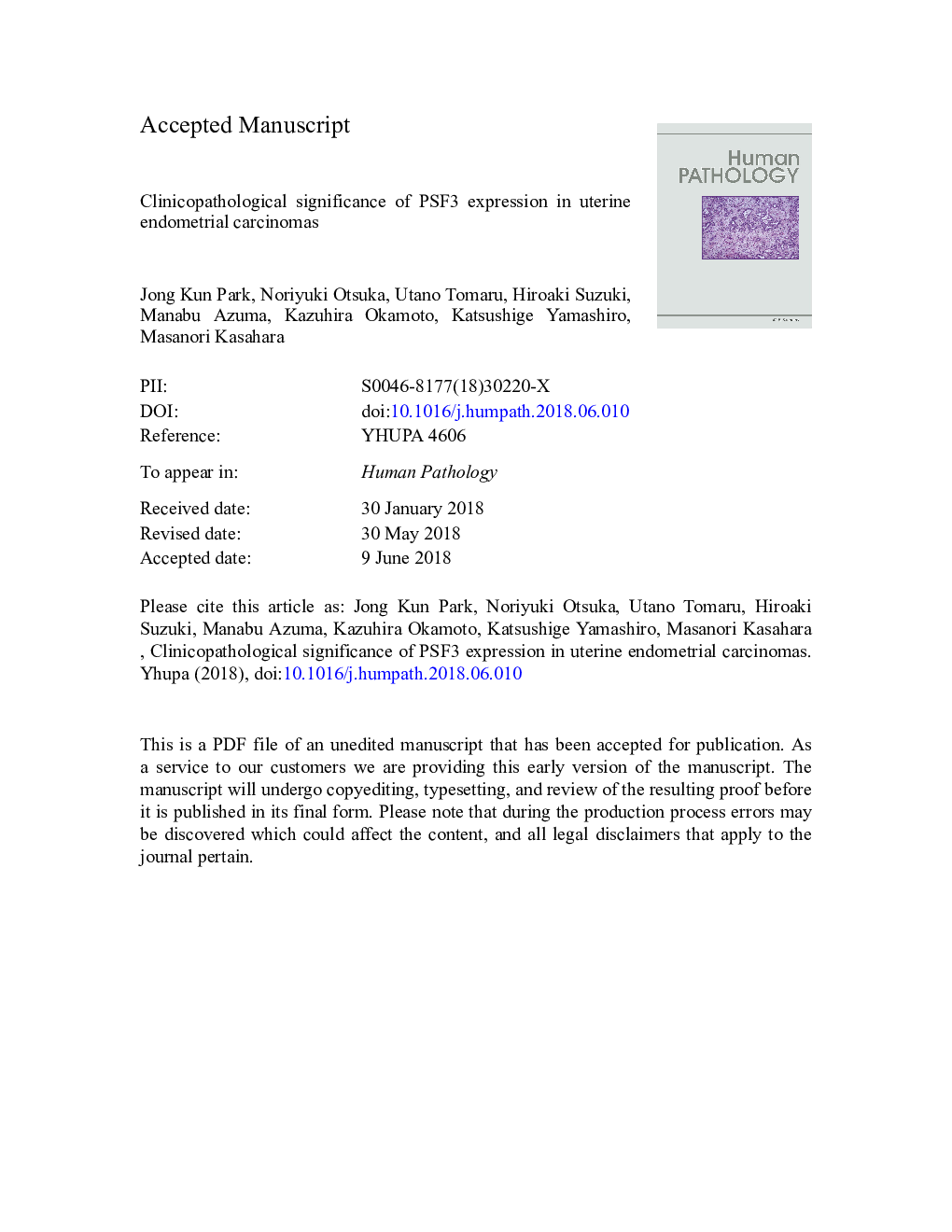| Article ID | Journal | Published Year | Pages | File Type |
|---|---|---|---|---|
| 10091007 | Human Pathology | 2018 | 31 Pages |
Abstract
PSF3 (Partner of SLD Five 3) is a member of the heterotetrameric complex termed GINS. Previous studies have shown that PSF3 is up-regulated in several cancers and is associated with tumor malignancy. However, the clinicopathological significance of PSF3 expression in endometrial lesions is still poorly understood. To investigate whether PSF3 could serve as a useful biomarker for endometrial carcinomas, we performed immunohistochemical analysis of PSF3 expression. In 155 cases of endometrial carcinomas (ECs), the mean tumor proportion score of PSF3 expression was 30.7% in G1 endometrioid carcinoma, 55.0% in G2 endometrioid carcinoma, 59.0% in G3 endometrioid carcinoma, and 58.9% in nonendometrioid carcinomas. In 25 cases of atypical hyperplasia, the mean tumor proportion score of PSF3 expression was significantly lower (10.4%). High expression of PSF3 was associated with more advanced pathologic T stage (Pâ¯=â¯.000), lymphatic invasion (Pâ¯=â¯.001), and poor clinical outcomes such as shorter relapse-free survival (Pâ¯=â¯.000) and overall survival (Pâ¯=â¯.001). When we compared the immunostaining of PSF3 and Ki-67, the proportions of PSF3-positive cells in tumor epithelial cells were comparable to those of Ki-67-positive cells. However, PSF3-positive cells were selectively found in tumor cells, whereas Ki-67-positive cells were also found in tumor stromal cells. These results demonstrated that PSF3 immunostaining was valuable as a histopathologic marker for differential diagnosis between atypical hyperplasia and ECs, for tumor histologic grading, and for determining a patient's prognosis. PSF3 may play a crucial role in tumor progression in EC.
Related Topics
Health Sciences
Medicine and Dentistry
Pathology and Medical Technology
Authors
Jong Kun MD, Noriyuki MD, PhD, Utano MD, PhD, Hiroaki MD, PhD, Manabu Azuma, Kazuhira MD, PhD, Katsushige MD, PhD, Masanori MD, PhD,
